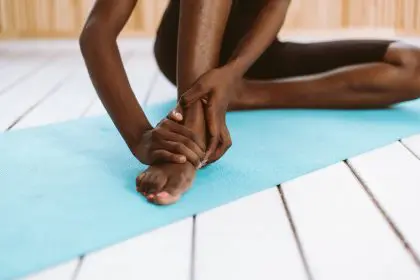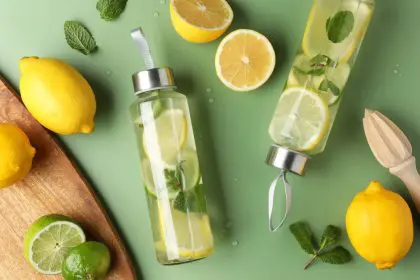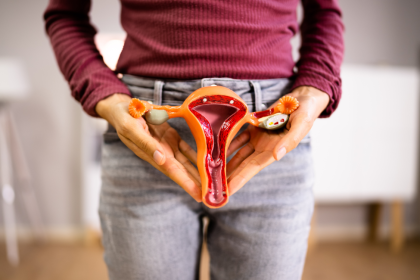They snake beneath your skin like little blue rivers, largely ignored until they start to bulge, ache, or create those distinctive spider patterns that seem to appear overnight. Your veins do the crucial work of carrying blood back to your heart, fighting gravity every step of the way. But when they struggle, the results can range from cosmetically frustrating to genuinely painful. While serious vein issues might require medical intervention, there’s a surprising amount you can do at home to support and improve your vein health naturally. These strategies work with your body’s own healing mechanisms to strengthen vessel walls, improve circulation, and potentially prevent minor vein issues from becoming major problems.
Why your veins might be struggling
Before diving into solutions, it helps to understand why vein problems develop in the first place. Unlike arteries, which have thick muscular walls to push blood forward, veins rely on one-way valves and the movement of surrounding muscles to keep blood flowing upward against gravity.
When these valves weaken or become damaged, blood can pool and flow backward, putting additional pressure on the vein walls. This pressure stretches the veins, potentially creating the bulging, twisted appearance of varicose veins or the smaller spider veins that appear close to the skin’s surface.
Several factors increase your risk of developing vein problems. Genetics play a significant role, with family history being one of the strongest predictors. The hormonal fluctuations of pregnancy, menopause, and birth control use can weaken vein walls. Age naturally diminishes vein elasticity. And lifestyle factors like prolonged sitting or standing, obesity, and lack of exercise all impair the muscular contractions that help push blood through your veins.
The good news is that many of these factors are within your control, and targeted natural approaches can make a meaningful difference in your vein health, especially when started before major problems develop.
The movement solution
The single most effective natural strategy for improving vein health is movement. Your calf muscles act as your “second heart,” squeezing veins to help push blood upward with each contraction. Without this muscular assistance, your heart alone struggles to overcome gravity and pull blood back up from your lower extremities.
Walking stands out as perhaps the ideal exercise for vein health. The rhythmic contraction of your calf muscles during walking creates the perfect pumping action to assist venous return. Aim for at least 30 minutes daily, but even short walks throughout the day can help, especially if you sit or stand for extended periods.
Swimming and water exercises provide additional benefits by combining movement with the gentle pressure of water against your legs, which helps support your veins externally while you work them internally. The buoyancy also reduces weight-bearing stress if you find walking uncomfortable.
Simple ankle pumps and calf raises can be done anywhere, even while sitting at a desk. Simply flex your foot up and down repeatedly, or rise up onto your toes and back down again. These small movements activate the calf pump mechanism that helps push blood upward.
Yoga poses that elevate your legs above your heart, like legs-up-the-wall pose, use gravity to your advantage, giving your veins a break from their constant fight against it. Even just 5-10 minutes in this position can provide temporary relief and improved circulation.
Dietary defenders for vein strength
What you eat significantly impacts your vein health through multiple mechanisms. Certain foods strengthen the actual structure of your vein walls, while others thin your blood slightly to improve flow, reduce inflammation, or support overall circulatory health.
Flavonoid-rich foods deserve special attention for vein health. These plant compounds, found in colorful fruits and vegetables, have been shown to strengthen capillary walls and improve venous tone. Particularly beneficial are dark berries, citrus fruits, cherries, and vegetables like bell peppers and spinach.
Specific mention goes to rutin, a flavonoid found in buckwheat, asparagus, cherries, and citrus peels. Rutin has been studied specifically for its ability to reduce swelling and improve symptoms in people with chronic venous insufficiency.
Foods rich in vitamin C play a crucial role in collagen formation, which provides structural support to your vein walls. Bell peppers, citrus fruits, strawberries, and broccoli are excellent sources. Paired with foods containing vitamin E like nuts, seeds, and olive oil, they provide antioxidant protection that helps prevent oxidative damage to your veins.
Omega-3 fatty acids found in fatty fish, walnuts, and flaxseeds have anti-inflammatory properties that may help reduce swelling and discomfort associated with vein problems. They also slightly thin the blood, potentially improving flow through compromised vessels.
Ginger and garlic deserve special mention for their circulatory benefits. Both have been shown to improve circulation, reduce inflammation, and prevent blood platelets from sticking together too readily, which can improve flow through narrowed veins.
Compression for daily support
While technically not a “natural” remedy in the strictest sense, compression socks or stockings provide external support that works with your body’s natural mechanics to improve vein function. They apply graduated pressure, strongest at the ankles and decreasing as they move up the leg, which helps push blood upward and prevents pooling.
For mild vein issues or prevention, over-the-counter compression stockings in the 15-20 mmHg range can be beneficial. These can be worn during long periods of sitting or standing, during travel, or even daily if you’re at high risk for vein problems.
The timing of compression matters too. Putting on compression stockings first thing in the morning, before gravity has caused blood to pool in your lower extremities, provides the most benefit. Some people find benefit from wearing them during exercise as well, when venous return is already enhanced by muscle movement.
Natural fibers like cotton or wool blends can make compression wear more comfortable and address concerns about synthetic materials against the skin all day. Newer compression options include toeless versions, more fashionable patterns, and varying heights from ankle to thigh-high, making this intervention more accessible and comfortable than ever.
Herbal allies for vein health
Several herbs have traditional and emerging scientific support for their benefits to vein health. These botanicals typically work by strengthening vein walls, reducing inflammation, or improving overall circulation.
Horse chestnut extract stands out with the strongest research behind it. Studies show it contains aescin, a compound that strengthens vein walls and reduces leakage from tiny capillaries. It’s been shown to reduce leg swelling and pain comparable to compression stockings in some research.
Butcher’s broom is another herb with specific benefits for veins. It contains compounds that constrict blood vessels and strengthen their walls, potentially reducing swelling and heaviness in the legs. It appears to work in part by activating receptors that help maintain proper vein tone.
Gotu kola has been used in traditional medicine for centuries to treat vein-related conditions. Modern research suggests it stimulates collagen production and strengthens connective tissue, potentially improving the structural integrity of vein walls.
Grape seed extract contains proanthocyanidins that strengthen capillaries and reduce inflammation. Some studies suggest it may help reduce the swelling associated with chronic venous insufficiency.
Pine bark extract, particularly a standardized extract called Pycnogenol, has shown promise for improving chronic venous insufficiency symptoms. It appears to strengthen capillaries while improving blood flow and reducing swelling.
When using herbal supplements, quality matters tremendously. Look for standardized extracts from reputable companies, and always inform your healthcare provider about supplements you’re taking, especially if you’re on blood thinners or other medications.
Elevation tactics beyond just putting your feet up
Strategic elevation of your legs allows gravity to assist venous return instead of hinder it. While simple elevation provides temporary relief, specific approaches maximize the benefit.
For optimal results, elevate your legs above the level of your heart. Simply propping them on a coffee table while seated won’t achieve this. Instead, lie on the floor with your legs extended up a wall, or use pillows to raise your feet significantly higher than your torso when lying down.
Timing matters too. Brief elevations throughout the day can provide relief, but a longer elevation session before bed may help reduce overnight swelling. Many people find 15-20 minutes of elevation in the evening provides noticeable improvement by morning.
When traveling or during situations where formal elevation isn’t possible, even raising your feet on a small stool or luggage can provide modest benefit compared to having them flat on the floor.
Hydration and vein health
Proper hydration plays a surprisingly important role in vein health. Dehydration thickens your blood, making it more difficult for it to flow through already compromised veins. It can also contribute to constipation, which increases abdominal pressure that must be overcome by veins returning blood from the lower body.
Water remains the ideal choice for hydration, but certain beverages offer additional vein benefits. Hibiscus tea has mild diuretic properties that can reduce water retention while providing antioxidants. Lemon water may support overall circulation, though research specifically on veins is limited.
Conversely, excessive alcohol and caffeine can contribute to dehydration and potentially worsen vein issues. Moderation is key, and balancing these beverages with additional water helps mitigate their effects.
The bottom line
Improving vein health naturally requires a multifaceted approach that addresses the underlying causes of vein dysfunction. Movement remains the foundation, helping to activate the calf muscle pump that assists venous return. Dietary changes provide the nutrients needed for vein repair and strength. Compression offers external support when internal systems struggle. Herbal allies can target specific aspects of vein health, from wall strength to inflammation.
While severe vein issues might ultimately require medical intervention, these natural approaches can prevent minor problems from worsening and might even reverse early-stage vein dysfunction. The best results come from combining strategies and maintaining them consistently, creating daily habits that support your veins in their challenging work against gravity.
Whether you’re looking to address existing vein problems or prevent them from developing as you age, these natural approaches offer a meaningful way to support the hidden rivers that keep your circulation flowing smoothly throughout your life.















